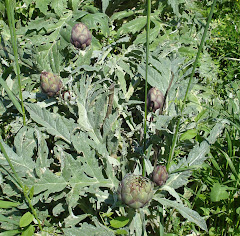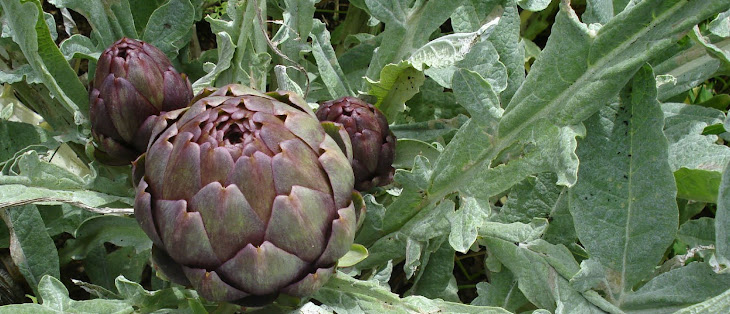Just a few photos to show the harvest from the older of our two olive trees, variety unknown, from which we picked 1.4 kilos of ripe olives yesterday (the most we’ve ever had from this tree we planted six years ago), and (right) the Lucque olives which are still ripening:
 |  |  |
I washed the olives, checked that none of them were damaged and dried a bowlful for salting immediately, using the same method as I used last year. I’ve left the others to drain and store in jars as recommended in Max Lambert’s book, L’Olivier et la Préparation des Olives. They can then be treated as I’ve shown below whenever they’re needed.
After drying them I pricked each one with a fork, then put them in a bowl with herbs – rosemary and bay leaves – and mixed them well with sea salt.
 |  |
As the liquid comes out of them I’ll drain it off over the next few days and in a week or so the olives should be ready to put in oil and eat. Last year I left them rather too long and they dried out too much, so this year they’ll stay in the salt for only a week to 10 days.









4 comments:
Beautiful olives! It sounds like tedious work to prick each one with a fork, but I bet the results are well worth the work.
This sure is an early variety you've got. Here nothing looks as black as that yet. It'll be at least another month before we'll be looking at picking olives. The bigger growers only just now cut the herbage under their trees in preparation for the nets.
Ok, I'll try this way. I've tried water, etc. but no great taste there. Salt however, makes good sense and good taste.
Happy weekend,
Sharon Lovejoy Writes from Sunflower House and a Little Green Island
I have four of five species in my California garden. We'll harvest in November.
Thanks for description! Central Texas seems to have recently discovered olives, and we're thinking of planting one ourselves--though more for landscape value than for the harvest. I've often wondered what to do with any potential fruit--I'm glad to hear that curing them isn't too arcane of a process!
Post a Comment